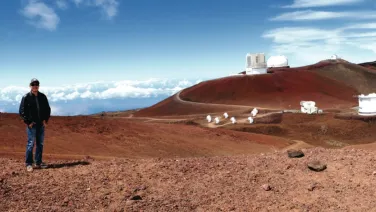
Galactic archaeology
About
Like traditional archaeologists, who study human history by investigating the remnants that can be excavated and observed today, galactic archaeologists trace the history and formation of the Milky Way galaxy from detailed observations of the stars, gas and other structures that can be observed from Earth.
Researchers at RSAA work on a wide range of areas and problems within this theme, including:
- understanding the chemical and dynamical properties of different stellar populations in the Galaxy
- searching for extremely metal-poor stars, which include the oldest stars that formed early in the history of the Galaxy
- investigating the nature and origins of globular clusters
- searching for satellite galaxies of the Milky Way
- mapping the structure of the galaxy, including stellar streams and substructure formed during the accretion of neighbouring galaxies
- studying the properties of the Large and Small Magellanic Clouds, dwarf galaxies that are relatively nearby neighbours to our Galaxy.
The Southern Sky Survey that is being carried out by the SkyMapper telescope will be instrumental to scientists studying the properties of the Milky Way, since it will provide a census of over 5 billion stars in the Galaxy. The instrument and survey design will allow astronomers to derive measurements of metallicity, gravity, temperature, and variability for many of these stars, and to continue to map the structure of the Milky Way and the Magellanic Clouds in increasing detail.






